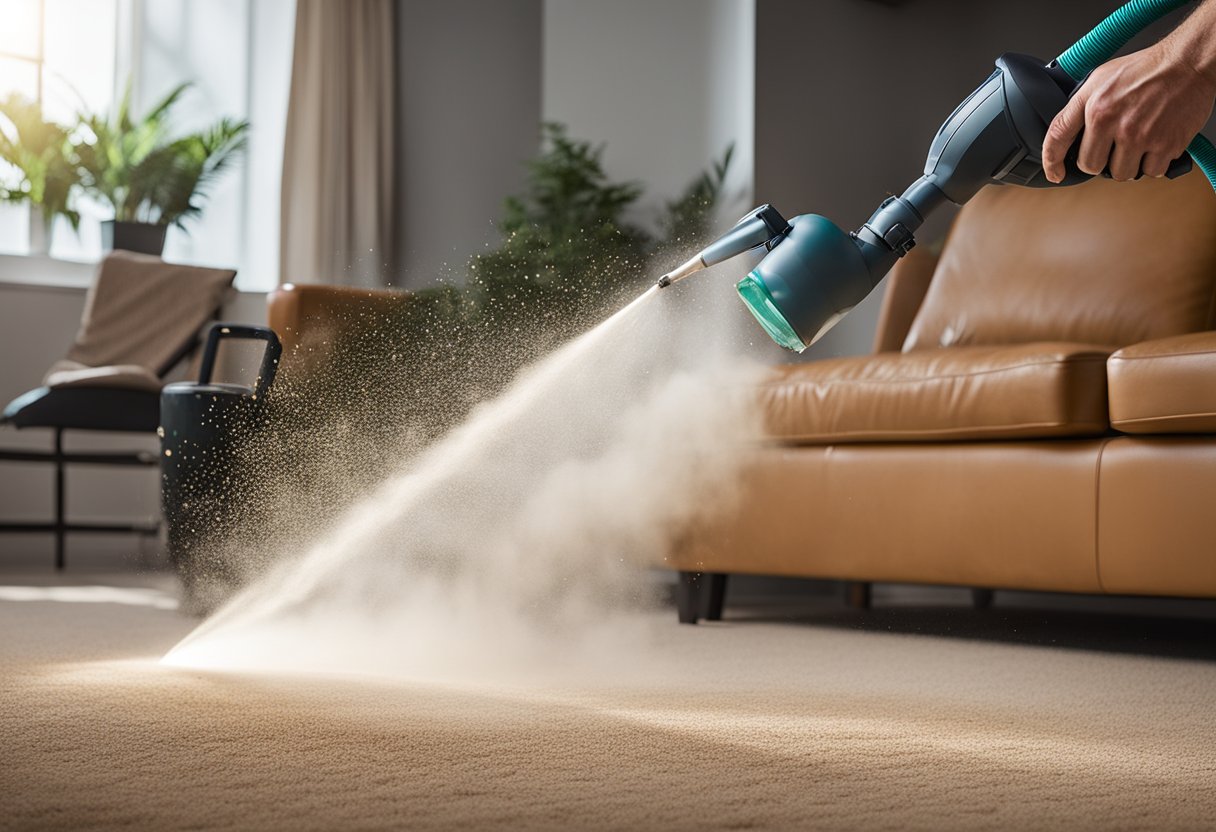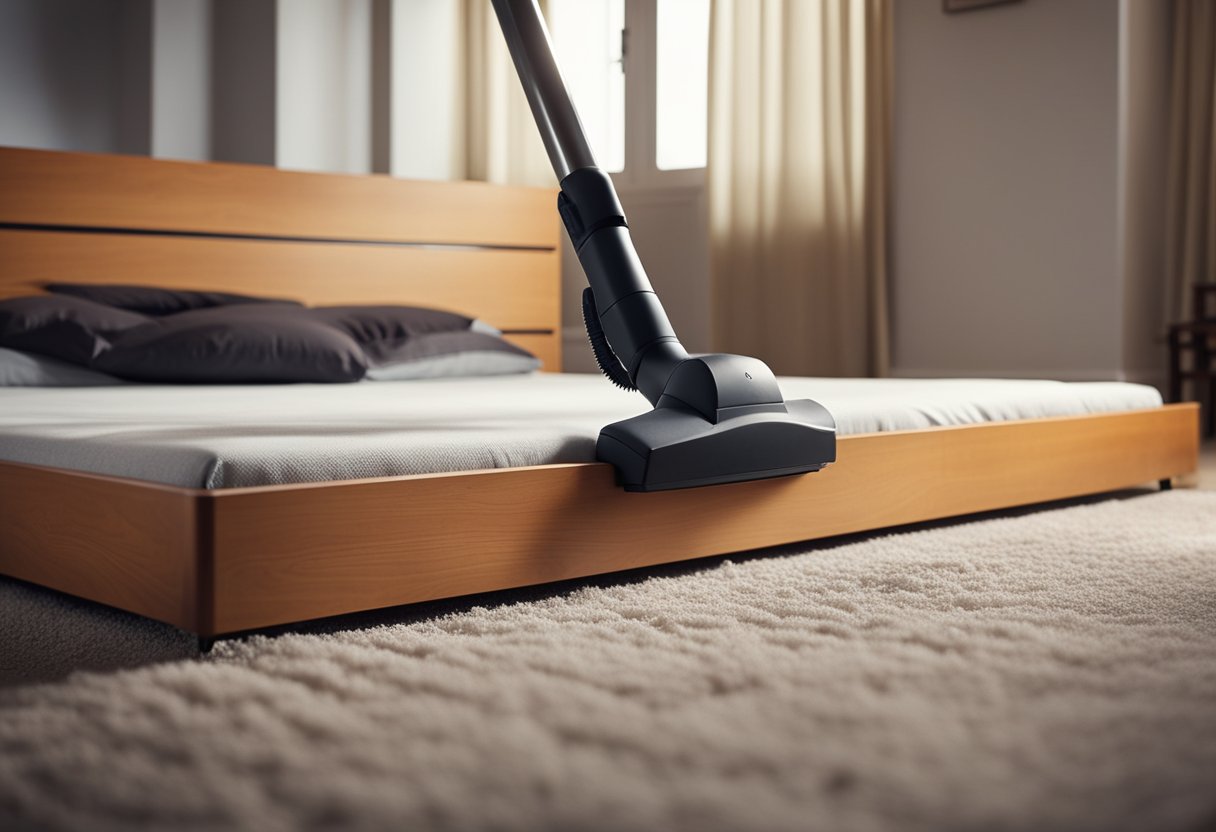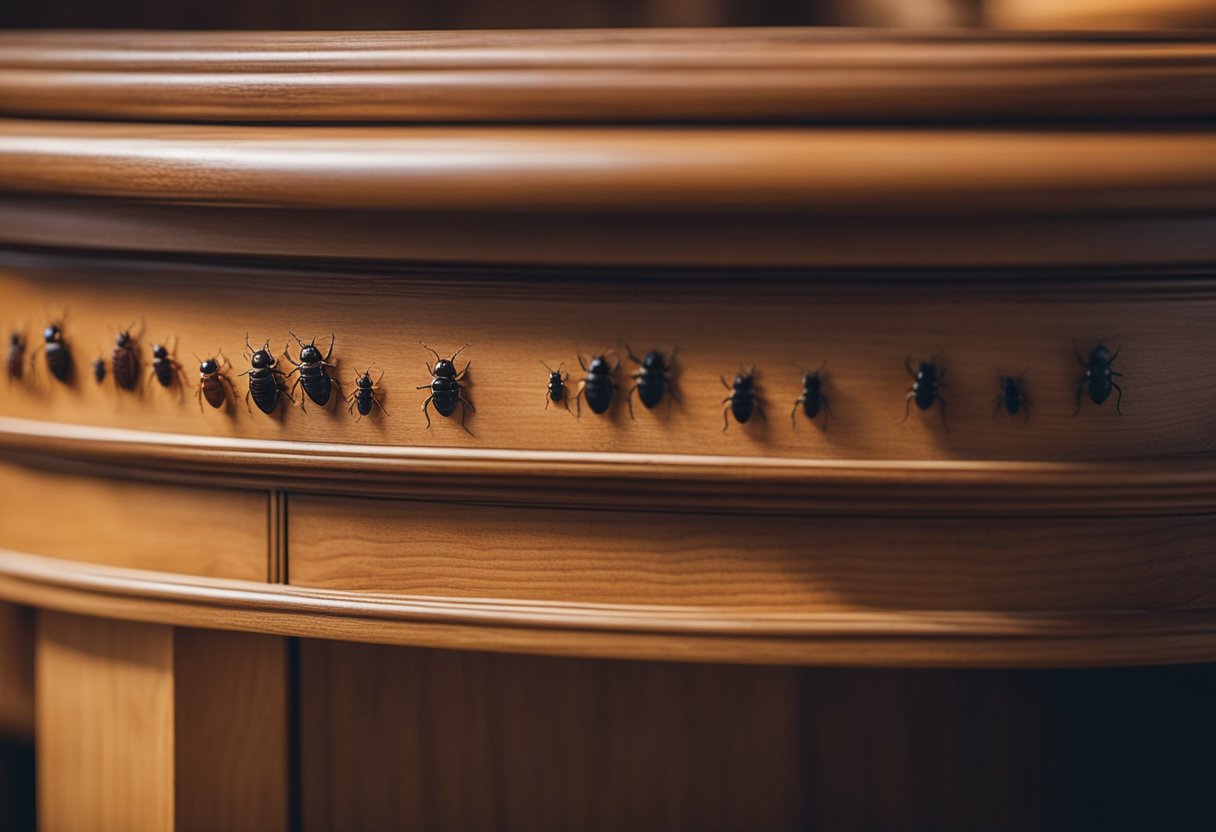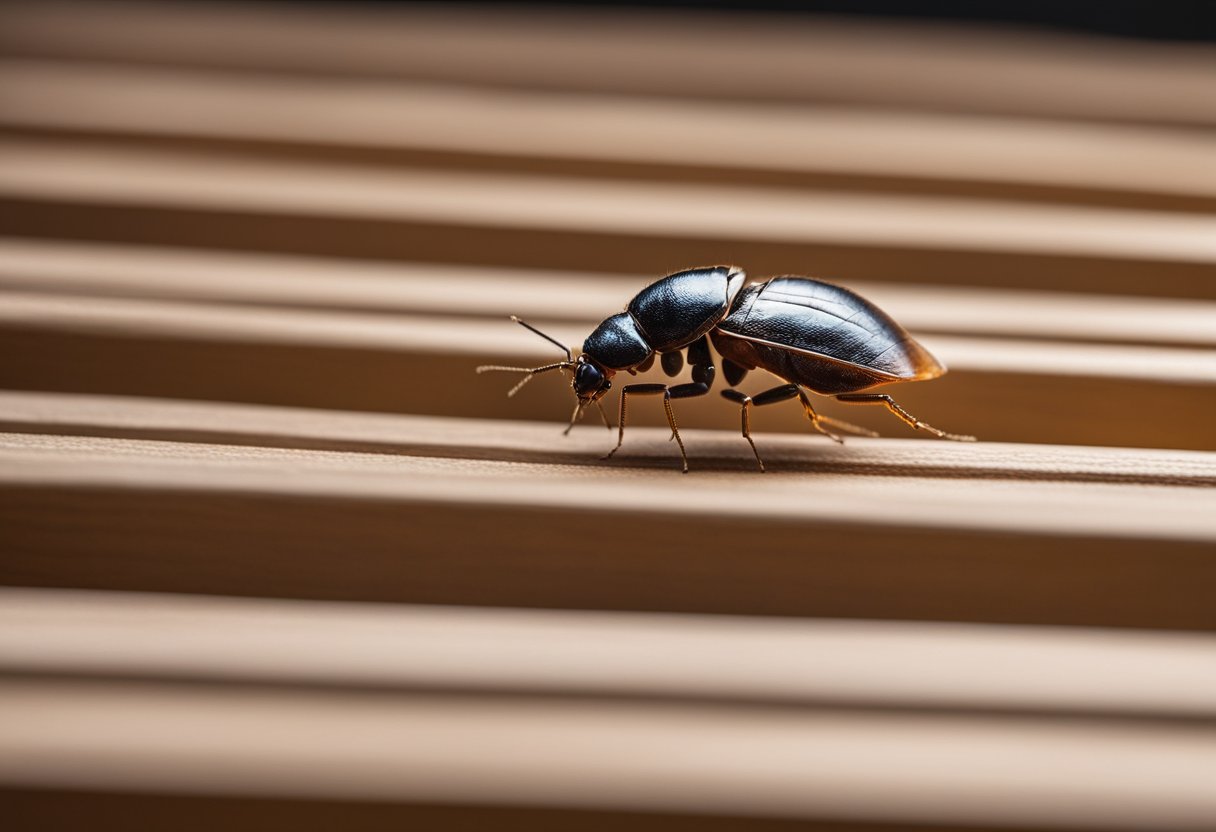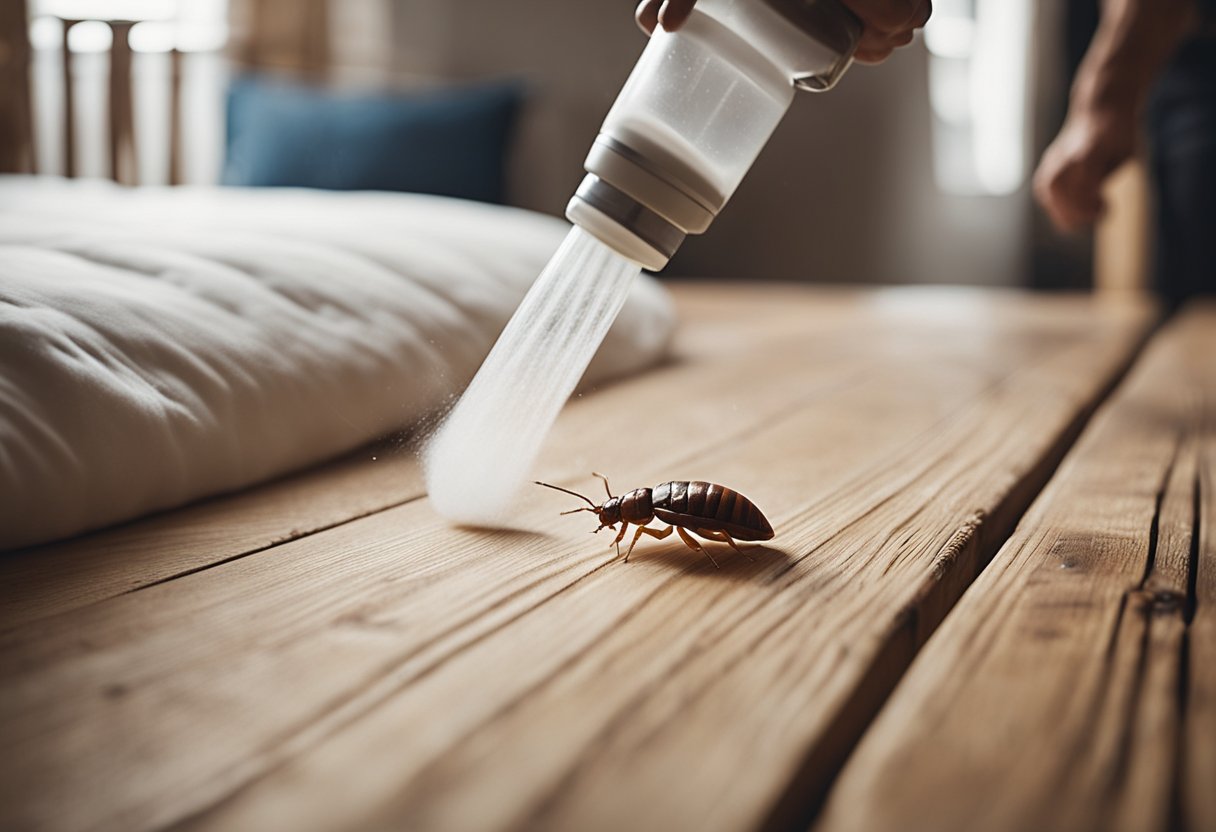Removing bed bugs from wood furniture can be a daunting task, but it is essential to keep your home free from these pesky insects. Bed bugs are small, oval-shaped, reddish-brown insects that feed on human blood. They are commonly found in furniture, especially in beds, sofas, and chairs. If you suspect that your wood furniture is infested with bed bugs, it is important to take immediate action to prevent the infestation from spreading.
Identifying bed bug infestation is the first step in removing them from your wood furniture. Some common signs of bed bug infestation include small, reddish-brown stains on your sheets, mattress, or furniture, tiny black dots (bed bug feces) on your sheets or mattress, and tiny, white eggs or eggshells. If you notice any of these signs, it is important to take action immediately to prevent the infestation from spreading.
In this article, I will provide you with a detailed guide on how to remove bed bugs from wood furniture. I will also discuss preventive measures to avoid bed bug infestation, treating infested clothing and linens, post-treatment measures, and when to seek professional help. With this guide, you can effectively remove bed bugs from your wood furniture and keep your home free from these pesky insects.
Key Takeaways
- Identifying bed bug infestation is the first step in removing them from your wood furniture.
- Preventive measures such as regular cleaning and inspection of second-hand furniture can help avoid bed bug infestation.
- Treating infested clothing and linens and monitoring post-treatment measures can help prevent the infestation from spreading.
Identifying Bed Bug Infestation
As someone who has dealt with bed bugs in my own home, I know how important it is to be able to identify signs of bed bug infestation early on. Bed bugs are small, reddish-brown insects that are about the size of an apple seed. They are most active at night and can be found in cracks and crevices around the bed, including the seams of the mattress, bed frame, and headboard.
To inspect for bed bugs, I recommend using a flashlight and magnifying glass to thoroughly examine all areas of the bed and surrounding furniture. Look for signs of bed bugs, such as droppings, shed skins, exoskeletons, blood stains, and bed bug stains. Bed bug stains are small, dark spots that are about the size of a pen tip and are usually found on the mattress or bedding.
Adult bed bugs are about the size of an apple seed and are reddish-brown in color. They are flat and oval-shaped and can be difficult to see. Look for tiny white eggs, which are about the size of a pinhead, and small, pale yellow larvae. Bed bugs can also leave a musty odor, so be sure to use your sense of smell as well.
If you suspect that you have a bed bug infestation, it is important to take action right away. Bed bugs can quickly spread throughout your home and can be difficult to get rid of once they have established themselves.
Understanding Bed Bugs and Their Behavior
https://www.youtube.com/watch?v=ML_O2nKw1t4&embed=true
As someone who has dealt with bed bug infestations in the past, I understand the frustration and anxiety that comes with trying to get rid of them. Bed bugs are small, reddish-brown insects that feed on human blood. They are typically found in bedrooms, but they can also be found in other areas of the home, such as living rooms and offices.
Bed bugs go through several stages of development, from eggs to nymphs to adults. Nymphs are smaller versions of adult bed bugs and require a blood meal to molt into the next stage. Bed bugs are attracted to the carbon dioxide that humans exhale and the warmth of our bodies, making our beds and furniture the perfect place for them to take up residence.
One of the most common signs of a bed bug infestation is itchy welts on the skin. These welts are caused by the bed bugs feeding on human blood. Bed bugs are most active at night, when they come out to feed. They can be difficult to spot, as they are small and often hide in cracks and crevices.
When trying to get rid of bed bugs, it is important to understand their behavior. Bed bugs can survive for several months without feeding, so simply leaving your furniture outside for a few days will not necessarily get rid of them. It is also important to note that bed bugs shed their skin as they grow, so you may find shed skin in addition to live bugs.
In summary, bed bugs are small insects that feed on human blood. They go through several stages of development, from eggs to nymphs to adults. Bed bugs are attracted to the carbon dioxide and warmth of our bodies, making our beds and furniture the perfect place for them to take up residence. Common signs of a bed bug infestation include itchy welts on the skin. When trying to get rid of bed bugs, it is important to understand their behavior and take appropriate measures to eliminate them.
Preventive Measures to Avoid Bed Bug Infestation
As someone who has dealt with bed bugs before, I know how much of a hassle it can be to get rid of them. That’s why I always take steps to prevent them from infesting my home in the first place. Here are some preventive measures you can take to avoid bed bug infestation:
1. Inspect Second-hand Furniture
If you’re buying used furniture, make sure to inspect it thoroughly before bringing it into your home. Bed bugs often hide in the crevices of wood furniture, so be sure to check all the nooks and crannies. You can use a flashlight to help you see better. If you do find bed bugs, don’t buy the furniture.
2. Use Furniture Covers
If you have wooden furniture in your home, consider using furniture covers to protect them from bed bugs. These covers are made of a special material that bed bugs can’t penetrate. They’re also easy to clean and can be reused.
3. Vacuum Regularly
Vacuuming your home regularly can help prevent bed bug infestation. Make sure to vacuum all the cracks and crevices in your furniture, as well as your floors and carpets. Be sure to dispose of the vacuum bag or empty the canister outside of your home.
4. Wash Clothes After Traveling
If you’ve been traveling, make sure to wash all your clothes as soon as you get home. Bed bugs can hitch a ride on your clothes and infest your home. Be sure to use hot water and dry your clothes on high heat to kill any bed bugs that may be hiding in them.
5. Keep Your Home Clutter-free
Bed bugs love clutter, so keeping your home clutter-free can help prevent infestation. Make sure to regularly clean and organize your home, and get rid of any items you no longer need.
6. Keep Pets and Kids Clean
Bed bugs can also hitch a ride on your pets and kids. Make sure to regularly bathe your pets and wash your kids’ clothes and bedding. This will help prevent bed bugs from infesting your home.
By following these preventive measures, you can greatly reduce the risk of bed bug infestation in your home.
Detailed Guide to Remove Bed Bugs from Wood Furniture
https://www.youtube.com/watch?v=jVKDmniiLm8&embed=true
As someone who has dealt with bed bugs before, I understand how frustrating it can be to find these pesky insects in your wood furniture. Fortunately, there are several effective methods to remove bed bugs from wood furniture. Here’s what I recommend:
-
Disassemble the furniture: The first step in removing bed bugs from wood furniture is to disassemble the furniture as much as possible. This will allow you to access all the hiding spots where bed bugs may be hiding, such as crevices and cracks in the frame.
-
Vacuum the furniture: Once you have disassembled the furniture, use a vacuum cleaner to suck up any bed bugs, eggs, or nymphs that you can see. Be sure to vacuum all the hiding places, including the seams, tufts, and folds of the furniture.
-
Steam clean the furniture: After vacuuming, use a steam cleaner to clean the furniture thoroughly. The high heat from the steam will kill any bed bugs and eggs that were not removed by vacuuming. Be sure to use a steamer that can reach temperatures of at least 130 degrees Fahrenheit to effectively kill the bed bugs.
-
Use insecticides: If vacuuming and steam cleaning are not enough to remove all the bed bugs, you can use insecticides to kill the remaining bed bugs. Be sure to use an insecticide that is labeled for use against bed bugs and follow the instructions carefully. You can also hire a professional pest control service to apply the insecticide for you.
-
Try diatomaceous earth: Another effective method to remove bed bugs from wood furniture is to use diatomaceous earth. This natural substance is safe for humans and pets but deadly to bed bugs. Simply sprinkle diatomaceous earth in the crevices and cracks of the furniture and leave it for a few days to kill the bed bugs.
-
Use interceptors: Finally, you can use interceptors to trap and kill bed bugs that may be hiding in the furniture. These devices are placed under the legs of the furniture and trap bed bugs as they try to climb up or down the furniture.
By following these steps, you can effectively remove bed bugs from your wood furniture and prevent them from coming back. Remember to always follow the instructions carefully when using any insecticides or chemicals and consider hiring a professional exterminator if the infestation is severe.
Treating Infested Clothing and Linens
https://www.youtube.com/watch?v=ZylFY4fAC8A&embed=true
I always start by removing all linens and clothing from the infested area. Bed bugs can hide in linens and clothing, so it’s essential to treat them as well to prevent reinfestation.
First, I gather all the linens and clothing and put them in a plastic bag. Then I take them to the washing machine and wash them in hot water. According to the EPA, using the highest heat setting possible is crucial to kill bed bugs and their eggs.
After washing, I put the linens and clothing in the dryer on the highest heat setting for at least 30 minutes. If the linens or clothing can’t be washed in hot water, I put them in the dryer on high heat for at least 30 minutes.
If I have any items that can’t be washed or dried, such as shoes or stuffed animals, I put them in a sealed plastic bag and place them in the freezer for at least four days. This kills the bed bugs and their eggs.
Another option is to use baking soda to kill bed bugs on linens and clothing. I sprinkle baking soda over the infested items and leave it for a few hours before vacuuming it up. This method can be effective in killing bed bugs, but it’s not as reliable as washing and drying.
By following these steps, I can ensure that all bed bugs and their eggs are eliminated from my linens and clothing, preventing reinfestation of my furniture.
Post-Treatment Measures and Monitoring
Now that you have successfully eradicated the bed bugs from your wood furniture, it is important to take post-treatment measures to ensure that the pests do not return. Here are some steps you can take to monitor and prevent a recurring infestation:
-
Inspect your furniture regularly: After treatment, it is important to inspect your furniture regularly for any signs of bed bugs. Check for any new bites on your skin, as well as any blood spots or fecal matter on your furniture. If you notice any signs of bed bugs, take immediate action to eradicate them.
-
Clean and vacuum your furniture: Regular cleaning and vacuuming of your furniture can help prevent bed bugs from returning. Use a high-efficiency particulate air (HEPA) filtered vacuum to ensure that all particles are removed from your furniture. This will also help eliminate any allergens associated with bed bugs and their debris.
-
Expose your furniture to sunlight: Bed bugs cannot survive in high temperatures. Expose your furniture to direct sunlight for several hours to kill any remaining bed bugs. This is a safe and effective way to eliminate bed bugs without using harmful chemicals.
-
Use essential oils: Essential oils such as lavender, tea tree, and peppermint can help repel bed bugs. Add a few drops of essential oil to a spray bottle filled with water and spray your furniture regularly to keep bed bugs away.
-
Dispose of infested items: If any of your furniture is severely infested with bed bugs, it may be best to dispose of it. Wrap the infested item in plastic and label it as infested. Do not donate or sell infested furniture, as this can spread the infestation to others.
-
Take safety precautions: When using any chemicals or pesticides to eradicate bed bugs, it is important to take safety precautions. Wear gloves, a mask, and protective clothing to avoid exposure to harmful chemicals. Always read the label and follow the instructions carefully.
By taking these post-treatment measures and monitoring your furniture regularly, you can prevent a recurring bed bug infestation and keep your home pest-free.
When to Seek Professional Help
If you have tried the DIY methods to remove bed bugs from your wood furniture and the infestation persists, it may be time to seek professional help. A bed bug infestation can be difficult to manage, and professional pest control services may be necessary to eradicate the problem.
Professional exterminators have the necessary knowledge, experience, and tools to effectively eliminate bed bugs from your home, including wood furniture. They can also provide advice on how to prevent future infestations.
When choosing a pest control specialist, it is important to do your research and select a reputable company. Look for companies that are licensed, insured, and have positive reviews from previous customers. Ask for a detailed treatment plan and cost estimate before agreeing to any services.
Keep in mind that professional pest control services can be expensive, but it may be worth the cost to ensure that the bed bug infestation is completely eradicated. In addition, some companies offer warranties or guarantees on their services, which can provide peace of mind.
Overall, if you have tried DIY methods to remove bed bugs from your wood furniture and the infestation persists, it may be time to seek professional help from a licensed and reputable pest control specialist.
Frequently Asked Questions
https://www.youtube.com/watch?v=Bo2C5ASMULA&embed=true
What kills bed bugs?
There are several ways to kill bed bugs, including using heat, insecticides, and diatomaceous earth. Heat is an effective way to kill bed bugs, as they cannot survive in temperatures above 120 degrees Fahrenheit. Insecticides can also be effective, but it is important to follow the instructions carefully and use them safely. Diatomaceous earth is a natural substance that can kill bed bugs by dehydrating them.
How long can bed bugs live on furniture?
Bed bugs can live on furniture for several months without feeding. They can also survive for up to a year without feeding in cooler temperatures. It is important to thoroughly clean and treat furniture to prevent bed bug infestations.
Can bed bugs live in walls?
Bed bugs can live in walls, especially if there are cracks or crevices for them to hide in. They can also travel between rooms through electrical outlets, baseboards, and other openings. It is important to thoroughly inspect and treat walls if you suspect a bed bug infestation.
Can bed bugs live in bed frames?
Bed bugs can live in bed frames, especially if there are cracks or crevices for them to hide in. They can also infest the mattress and bedding. It is important to thoroughly clean and treat bed frames to prevent bed bug infestations.
Can bed bugs live in wood dressers?
Bed bugs can live in wood dressers, especially if there are cracks or crevices for them to hide in. They can also infest clothing and other items stored in the dresser. It is important to thoroughly clean and treat wood dressers to prevent bed bug infestations.
Can you get bed bugs from used wood furniture?
Yes, it is possible to get bed bugs from used wood furniture. Bed bugs can hide in cracks and crevices in the furniture and can be difficult to detect. It is important to thoroughly inspect and treat used furniture before bringing it into your home.

Hi, I’m Sal Muller of Tooltrip.com. My DIY experience led me to understand essential power tools for home projects. Tooltrip.com guides enthusiasts and professionals in choosing right tools for any job. I provide concise top tool reviews for easier, efficient DIY.

